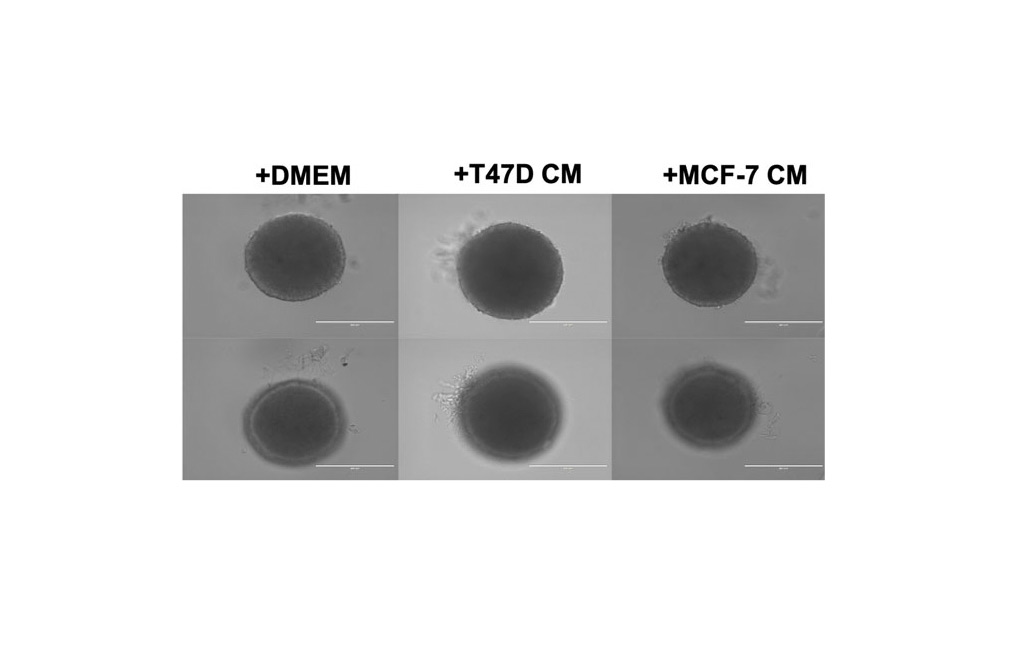Three-dimensional (3D) models have been used to mimic the physiological tumor conditions in vivo, as cells growing in 3D spheroids tend to recapitulate those in vivo including cell-cell interaction, metabolism, and morphology. Breast tumor microenvironment encompasses many stromal cells including Cancer-associated fibroblasts, which have been found to support tumor initiation, invasion, and metastasis. Our study aims at developing a 3D culture system whereby tumor cells and fibroblasts are in direct physical contact. This system allowed us to investigate the reciprocal interactions between breast cancer cells (T47D,MCF-7) and human foreskin fibroblast (HFF), which still remains under investigation. By culturing cancer spheroids in fibroblasts conditioned medium (CM) and vice versa, we found that cancer CM induces behavioral changes in HFF spheroids. We also observed chemotaxis between both cell lines, when we added HFF cells/spheroid to already established tumor spheroids, and vice versa. This system also allows for testing against anti-cancer reagents like lycopene, the carotenoid found in red-colored fruits. Since lycopene mechanism of action remains unknown, we propose that lycopene exhibits anticancer effects on both breast tumor cells and fibroblasts, that negatively hinder their migration, survival, and proliferation. We support this hypothesis by recent evidence and a migration assay that exposed naive HFF cells to lycopene and resulted in a dose-dependent inhibition of migration of cells.



